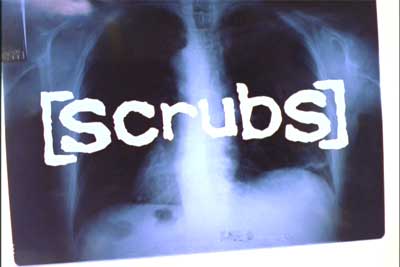Can a beer belly save your life?
Last week on Car Talk, the Magliozzi brothers opened their weekly radio show with new research that relates a man's physique to his chances of surviving a car crash. According to a Medical College of Wisconsin study, "certain men are more likely to survive a car accident by virtue of their...beer bellies! It turns out that the extra layer of lard that many guys carry around in their midsections can actually help protect vital internal organs in the event of a serious accident." However, "there's a cut-off point...They say if you're too fat, it doesn't help, because then you've got other problems that hurt your chances of surviving." Listen to their hilarious banter here (clicking the link will open a RealPlayer file that's about 3 minutes long; in case it doesn't work I've provided a transcript* below).
If, like me, you don't have access to the full text of the original research article, you might also want to check out these slightly more serious summaries of the study: 'Spare Tire' Might Protect Men During Car Accident and Obese and Skinny Male Drivers Fare Worse in Car Crashes. Sure enough, the Car Talk guys basically got it right: male drivers with a body mass index (BMI) greater than 35 (i.e., obese) or lower than 22 (i.e., lean) were more likely to die after car collisions than men with intermediate BMIs. Men with BMIs around 28 (i.e., overweight) had the best odds of survival, perhaps due to a "cushioning effect."
So what does a beer belly look like in the anatomy lab? You'd probably expect obese individuals to have a relatively thick layer of fat just under the skin, and indeed they do. Of course, we all have fat just under our skin, i.e., subcutaneous fat. It's the fat you can measure with skinfold calipers.
But peel away the subcutaneous fat, and the beer belly, though smaller, is still there. That's because a second type of fat - visceral fat - is lurking around the intestines and other abdominal organs. Visceral fat accumulates in several anatomically distinct sites:
- Deep to the muscles of the abdomen. The inside of the abdominal body wall is lined with a very thin transparent membrane called the peritoneum. Sandwiched between the peritoneum and the muscles of the abdomen is a layer of fat - called extraperitoneal or retroperitoneal fat - that is too deep to grab with skinfold calipers. Some people have a little, some people have a lot. Everyone has at least some deposits of retroperitoneal fat around their kidneys, presumably for its cushioning effect.
- In sheets of tissue attached to the stomach and intestines. These sheets of tissue - called omenta and mesenteries - convey blood vessels, nerves, and lymphatics to the various organs of the abdomen. They can also contain huge quantities of fat.
- On the large intestine. The large intestine (or colon) has finger-like globs of fat - called epiploic appendages - dangling along its entire length. Epiploic appendages appear to serve as nothing more than a reservoir of surplus fat.
* Transcript of Car Talk, 25 March 2006, opening segment:
Ray: We're broadcasting this week from the Department of Evolutionary Biology here at Car Talk Plaza.
Tom: Yeah, this is very interesting, and it's good news for some people...This is a study from the Medical College of Wisconsin in Milwaukee. They found that certain men are more likely to survive a car accident by virtue of their...beer bellies! It turns out that the extra layer of lard that many guys carry around in their midsections can actually help protect vital internal organs in the event of a serious accident.
Ray: Sure, it's a built-in airbag.
Tom: That's the theory at least. There's a cut-off point...they say if you're too fat, it doesn't help, because then you've got other problems that hurt your chances of surviving. But who knew? I mean, this is brilliant stuff.
Ray: So you gotta have a beer belly, but it can't be huge. It's gotta be just the right size.
Tom: Here we thought that the beer belly was a useless appendage. In fact, we even refer to it as the "spare tire" - "spare" as in "unnecessary." Not so - it's an evolutionary advantage. What do you think of that?
Ray: Jeez, well, I'm encouraged, actually. Now, it does raise one question: what about women? Don't they have their own...
Tom: Airbags?
Ray: OK, this study doesn't address that I guess...
Tom: It doesn't address that but I was wondering the same thing, because the study does happen to note that men were twice as likely to die in the 22,000 accidents that they looked at. Why? We don't know. But I think someone should look into your theory of natural airbags. That might have something to do with it.
Ray: And what about the unnatural airbags? You would think those would provide an even, uh, larger amount of protection, wouldn't they? I mean, shouldn't someone study that, too? It could be us!
Tom: I'll get right on it!





